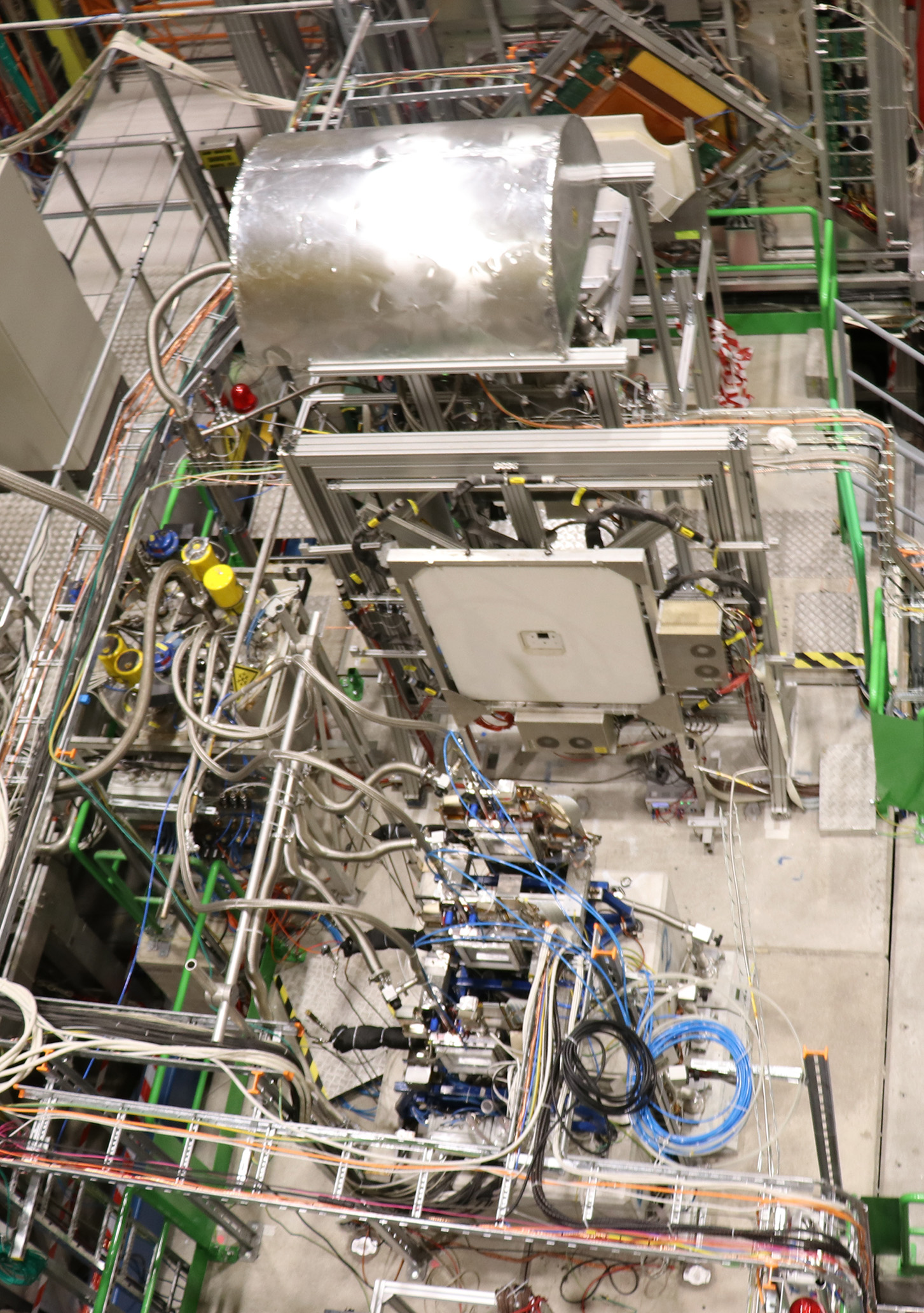AMBER uncovers the universe’s mysteries
The AMBER spectrometer. Credit: K Bernhard-Novotny/A Sargsyan
Despite our extensive knowledge, the universe remains mysterious in many ways. To this day, questions prevail about the origin of the matter-antimatter asymmetry. The exact sources of antiprotons in our galaxy are largely unknown. Do they originate from cosmic ray collisions with the interstellar medium, which is mainly composed of hydrogen and helium atoms, or could they have more elusive sources, such as dark matter? Space-based experiments such as AMS-02 count antiprotons arriving at their detectors from space and try to distinguish between potential sources by searching for deviations that might occur regarding certain models.
To provide input to such models predicting the appearance of antiprotons in the universe, terrestrial experiments are necessary that reproduce collisions between cosmic rays and the interstellar medium. A new experiment, AMBER, uses the hadron beams of CERN’s North Area, which are in the ideal energy range for such a measurement. When the beam impinges onto interchangeable targets of helium or hydrogen, antiprotons at collision energies close to those from cosmic rays measured at AMS-02 emerge and are identified with the help of the Ring Imaging Cherenkov detector in the AMBER spectrometer. Only antiprotons that result from beam protons, which are identified via differential Cherenkov detectors (CEDARs), are considered. In contrast to collider experiments, the resulting antiprotons carry a larger fraction of the collision energy and are thus better suited for the study. To maximize the probability of the collision between the protons and the target, the experimentalists started off by using liquid helium in 2023 and used liquid hydrogen during their latest run. To study the energy dependence of the antiproton production, for each target up to six different beam momenta were selected.

Bird’s eye view of the target area. Credit: K Bernhard-Novotny/A Sargsyan
This year’s measurement extends the parameter space that has been previously covered by the NA61 experiment for liquid hydrogen. Additionally, measurements with liquid deuterium have been performed. These datasets enable a full picture of the antiproton cross-section in both proton-proton and proton-neutron collisions. Thomas Pöschl, coordinator of the latest data taking, explains, "By exchanging the liquid hydrogen in our target with liquid deuterium, we can measure the effect of an additional neutron in the target nucleus on the antiproton production with minimal systematic change of the experimental setup."
Apart from performing very accurate measurements, a preliminary study in 2003 [1] by the NA49 experiment suggested an asymmetry in the antiproton production when protons interact with either protons or neutrons. Both particles are baryons, have a similar mass, and only differ by an up and down quark besides their charge. As QCD predicts an isospin symmetry, the observed asymmetry is unexpected and, if confirmed, would affect the antiproton production in cosmic rays, as it implies a different production rate of antiprotons and antineutrons in proton-proton collisions. Antineutrons decay into antiprotons after roughly 900 seconds in the galaxy. Thus, antineutrons and the resulting antiprotons also count fully toward the flux measured by AMS-02. So far, there are no measurements on antineutron production, and models usually just take twice the cross-section for antiproton production instead. The preliminary results by NA49, however, suggested a difference of up to 50% in the production, implying that the predictions of existing models for antiproton production in the galaxy could change by up to 20%. As AMS-02 is a factor of 20 more precise, this lack of knowledge is currently hindering a full interpretation of the measured antiproton spectrum by AMS-02.
Therefore, the AMBER physicists will now use their data to scrutinize the findings obtained by NA49 to see whether the observed isospin asymmetry will be refuted or confirmed.
The physicists have even more ambitious plans. Jan Friedrich, co-spokesperson of the experiment, explains, “During AMBER Phase-II, we are also interested in probing anti-deuterium and anti-helium. This will require an upgrade to AMBER’s DAQ system to handle the high beam intensities needed to produce sufficient statistics, which is already in the pipeline.”
Co-spokesperson Oleg Denisov adds, “We are preparing ourselves for the second and third of the three approved programs of the AMBER Phase-1 Proposal, which are a precise measurement of the proton radius and Drell-Yan measurements to understand the emergence of hadron masses. We are all very excited.”
High-intensity beam studies for the upcoming program will begin in October and will help prepare for the anticipated upgrade of the M2 beam line by the BE-EA group.
Further Reading
